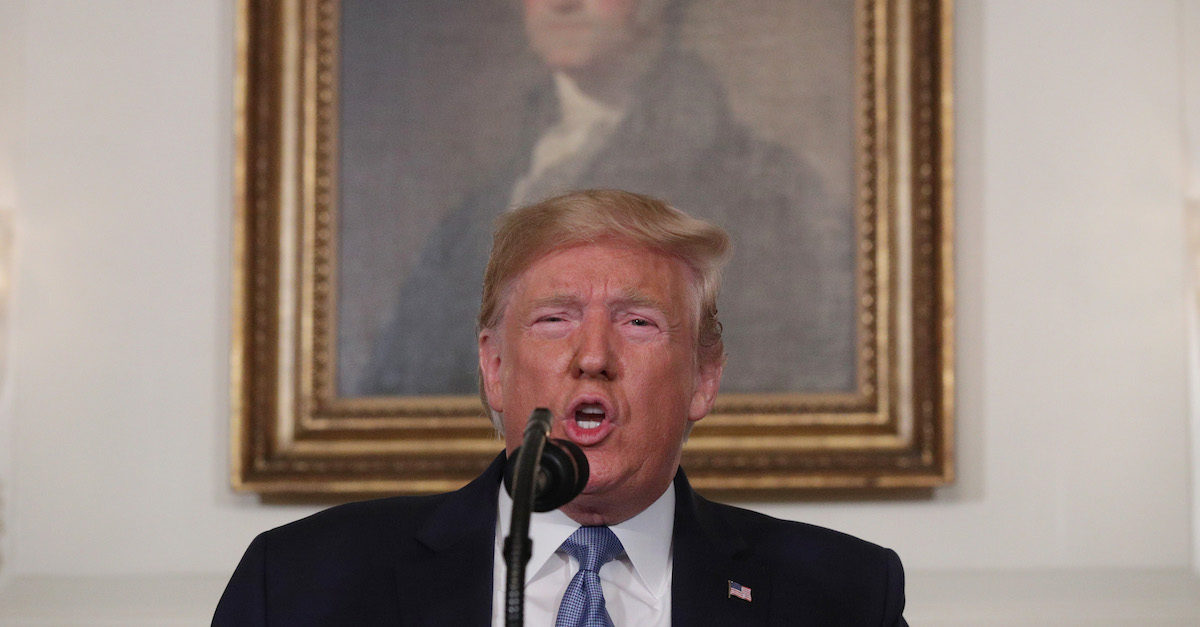
For months, President Donald Trump’s tax returns have been the subject of multiple lawsuits working their way through the federal court system. But it wasn’t until Thursday that one of those cases finally reached the nation’s highest court, when attorneys for President Trump filed a petition for a writ of certiorari with the Supreme Court in Trump v. Vance. According to University of Texas law Professor Steve Vladeck, however, the Vance case, despite winning the race to the Supreme Court, is “likely to be overtaken in importance by other subpoena disputes making their way to the court,” particularly, “the dispute over the House Oversight Committee’s subpoena to the Mazars accounting firm” in Trump v. Mazars USA, LLP.
While both the Vance and Mazars cases deal directly with the release of Trump’s tax returns, and both are on a track to hit the High Court in its current term, Vladeck notes that in Mazars, the broad scope of the issue being decided, combined with the lack of agreements between the parties (Trump and Congress), means the Supreme Court will likely have to issue an interim decision in Mazers before even deciding whether to take up Vance.
Team Trump signaled that it would be filing an emergency petition with the Supreme Court on Friday in a bid to keep the president’s tax returns and other financial documents out of the hands of the U.S. House of Representatives, which subpoenaed Trump’s finance firm for those records.
The Vance case centers on whether the supremacy clause of the U.S. Constitution allows the president to block a state district attorney from subpoenaing a third-party (i.e. not the president) for documents related to a state investigation that may implicate the president. That case involves Manhattan District Attorney Cy Vance’s investigation into the president and his private businesses. It is extremely narrow in scope, a point the Second Circuit explicitly stated in its recent decision denying the president’s request for an injunction.
“We emphasize again the narrowness of the issue before us. This appeal does not require us to consider whether the President is immune from indictment and prosecution while in office, nor to consider whether the President may lawfully be ordered to produce documents for use in a state criminal proceeding,” the Court wrote.
DA Vance has also agreed not to enforce the subpoenas at issue until the litigation is complete, meaning the president doesn’t have to worry about his tax returns being handed over while his appeals are ongoing.
The Court in Mazars, though, has set the table for the Supreme Court to issue a ruling central to the government’s separation of powers, and without an agreement from Congress to hold off on enforcing its demands, an issue the Supreme Court will have to address before Mazars USA (the president’s accounting firm) complies with the subpoena to produce Trump’s tax returns in accordance with the D.C. Circuit decision.
“Unlike the Vance case, the ruling of the U.S. Court of Appeals for the District of Columbia Circuit in the House Oversight Committee case (Trump v. Mazars USA, LLP) decided a far broader question about Congress’ subpoena powers, and thus has far more significant ramifications for other ongoing disputes than the Vance case, which is necessarily limited to the unique posture of a state investigation,” Vladeck wrote. “And unlike in the Vance case, there’s no agreement between the parties to stay enforcement of the subpoena pending appeal. With the D.C. Circuit’s mandate set to issue next Wednesday, Trump’s lawyers have suggested that they will seek a stay of that decision as early as today. If that happens, it is likely that the justices will end up voting at least on whether to stay the D.C. Circuit’s decision in the Mazars case before they decide whether to take up the Vance case on the merits.”
Therefore, according to Vladeck, circumstances dictate that the Supreme Court will almost certainly have to address the more important controversy in Mazars before the justices decide on the narrow issue presented in Vance.
“Even though the Vance case is the first to reach the Supreme Court, it may not be the first to produce at least an interim decision from the justices,” he wrote. “And given the very different questions the two cases present, the court’s disposition in Vance is likely to be not nearly as significant as its disposition in Mazars.”
The professor also laid out what the timeline for the Vance case might look like, if SCOTUS takes that case up:
Under the parties’ agreement, Vance has seven calendar days to file a brief in opposition to the petition, and Trump has three calendar days to reply—meaning that the briefing on the cert petition should be complete by Monday, November 25. That timing is important because it would presumably allow for the petition to be distributed for the justices’ conference on December 13—the last time the justices will vote on new cases before the Supreme Court’s informal winter recess. (The next conference after December 13 is four weeks later—on Friday, January 10, 2020.) If the justices were inclined to take up the president’s appeal, that would allow the case to be fully briefed and argued during the court’s current term, with a decision by the last week of June.
In summary, a decision could drop months before the 2020 election.
[Image via Alex Wong/Getty Images]